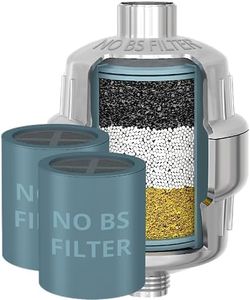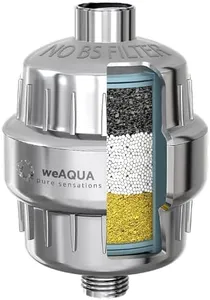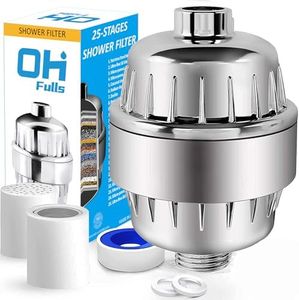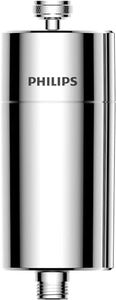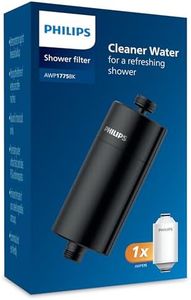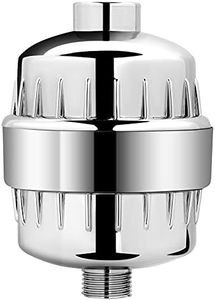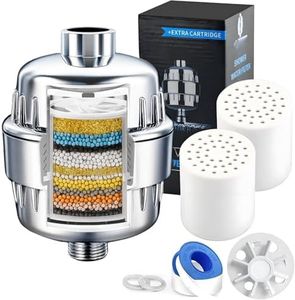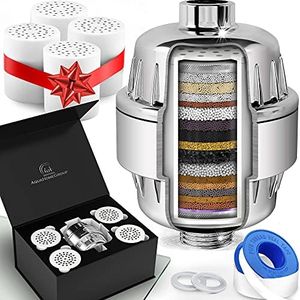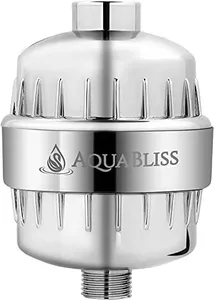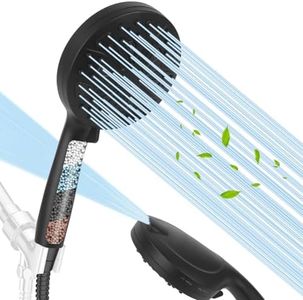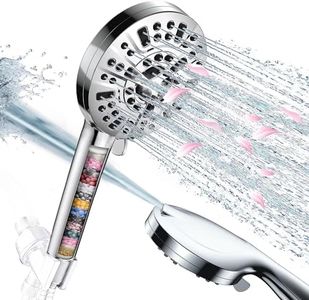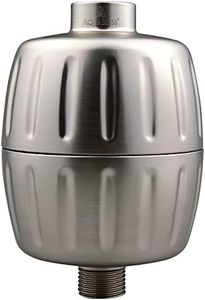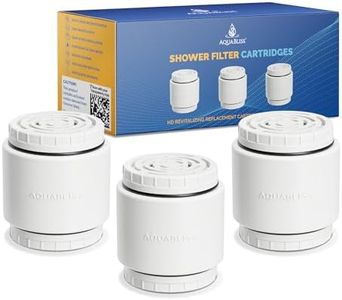We Use CookiesWe use cookies to enhance the security, performance,
functionality and for analytical and promotional activities. By continuing to browse this site you
are agreeing to our privacy policy
10 Best Shower Head Filters
From leading brands and best sellers available on the web.By clicking on a link to a third party's website, log data is shared with that third party.
Buying Guide for the Best Shower Head Filters
Choosing the right shower head filter can make a noticeable difference in your shower experience, especially if you’re concerned about water quality, skin health, or hair care. When picking a shower head filter, it's important to consider what contaminants you want to reduce, the type of filter that will best fit your shower setup, and how easy it is to maintain or replace. Take a bit of time to understand your water’s characteristics and your specific needs, so you end up with a filter that matches your lifestyle and delivers the benefits you expect.Filtration MediaFiltration media refers to the material inside the filter that actually removes impurities from your water. Common types include activated carbon, KDF (Kinetic Degradation Fluxion), vitamin C, and ceramic beads. This spec is important because different filtration media target different contaminants; for example, activated carbon is great for chlorine and some organic compounds, while KDF can help with heavy metals and bacteria. When comparing filters, check which contaminants each type of media is effective against and think about your main concern, like reducing chlorine for skin sensitivity or heavy metals for overall water safety. Your needs—whether for softer skin, healthier hair, or safer water—should guide which type of media to prioritize.
Performance (Micron Rating)The micron rating tells you how small the particles are that the filter can catch. Lower micron numbers mean the filter can block smaller particles, which can be important for removing fine sediment and contaminants. Most shower filters come in a range of 5 to 20 microns; a 5-micron filter blocks very tiny particles, whereas a higher rating is less restrictive. If you have particularly dirty or sediment-heavy water, go for a lower micron filter. If your main concern is chemicals like chlorine (which are dissolved and not particles), focus more on filter media than just the micron rating.
Filter LifespanFilter lifespan tells you how long the filter can operate before you need to replace it. Lifespan is usually measured in gallons filtered or months of use. A longer lifespan means less frequent replacements, which is convenient—especially if your usage is high or you dislike maintenance. However, a very long lifespan isn’t always better if the filter doesn’t suit your water needs. Consider how many people use the shower and how often, and base your decision on how willing you are to change the filter regularly.
Installation Type & CompatibilityInstallation type refers to how the filter attaches to your shower, whether it’s a universal inline style, built into the shower head, or requires specific fittings. Compatibility is simply about whether the filter fits your existing shower arm or plumbing. This is important because not every filter will fit every bathroom, and a filter that’s hard to install or incompatible can be frustrating. Check the shape and thread type of your current shower setup, and aim for a filter designed to work with your fixtures or opt for universal models if you’re unsure.
Flow RateFlow rate is the amount of water that passes through the filter, usually measured in gallons per minute (GPM). Standard shower filters often range from 1.5 to 2.5 GPM. Lower flow rates can save water but might feel less powerful, while higher rates offer a more robust showering experience but may use more water. Choose a flow rate that matches your comfort preference—if you value strong water pressure, look for a filter with a higher flow rate; for water conservation or areas with limited supply, a lower rate might be a better fit.
